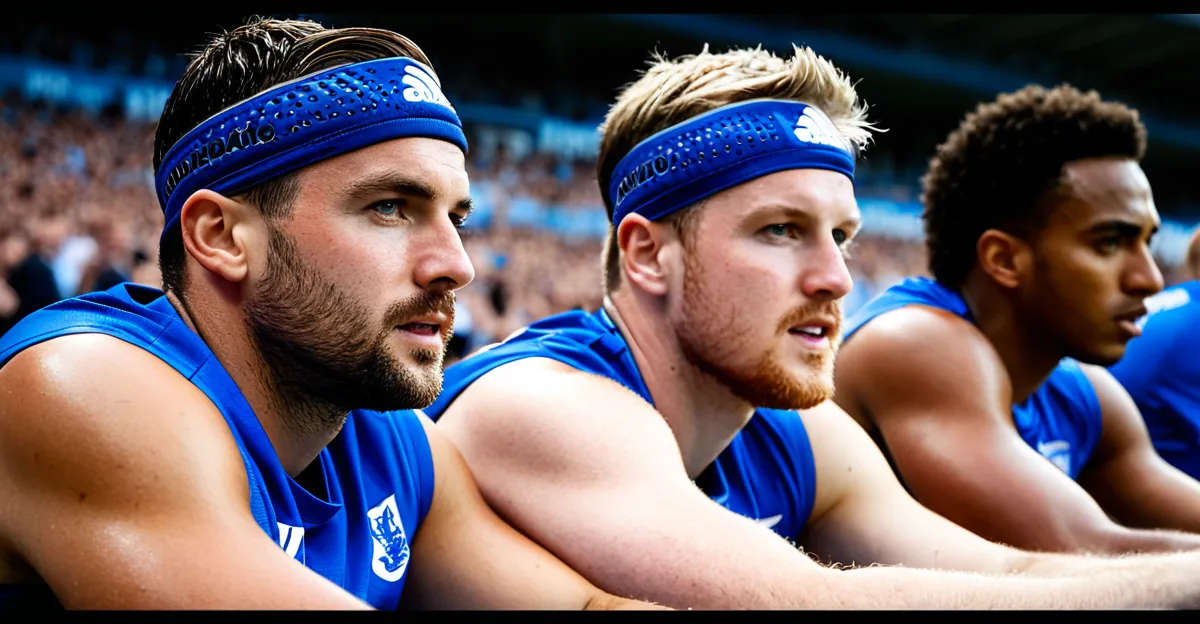Overview of Performance Optimization Strategies
Performance optimization is crucial for the success of any sports team. It encompasses various techniques aimed at enhancing the capabilities and efficiency of athletes. For UK sports teams, performance optimization can distinguish between competitive success and failure. Yet, teams encounter several challenges, such as maintaining athlete motivation, addressing fatigue, and integrating optimization strategies effectively within their routines.
An array of performance optimization strategies are utilized to address these challenges. Training techniques are fundamental, emphasizing tailored regimens to meet individual athlete needs. These programs integrate tactical strategies to enhance understanding and application during actual game scenarios. Furthermore, the use of performance metrics provides actionable insights for coaches to refine tactics and training accordingly.
In parallel : How can UK Sports Initiatives Inspire Global Athletic Development?
Incorporating technology such as wearables and analytics into routines revolutionizes monitoring and assessment. This technological integration ensures precise tracking of improvements and identifies areas requiring further enhancement. By exploring and implementing diverse optimization methods, sports teams can create a dynamic environment fostering continuous progression and success.
Effective Training Techniques for UK Sports Teams
Developing robust training programs is pivotal to athlete development and performance optimization. In the realm of UK sports, there’s a significant emphasis on crafting tailored training regimens, as understanding the individual needs of athletes can vastly impact overall performance.
Also to discover : How Does Sports Tourism Influence the UK Economy?
Importance of Tailored Training Regimens
Tailored training regimens play a critical role in optimizing each athlete’s capabilities. By personalizing programs to suit individual strengths and weaknesses, teams ensure that athletes are challenged appropriately and progress effectively. This personalized approach not only enhances physical outputs but also boosts athletes’ morale and engagement, fostering a more committed team environment.
Incorporating Strength and Conditioning
Strength and conditioning are integral components of training programs. The benefits of strength conditioning extend beyond performance enhancement—it is vital for injury prevention. A focus on physical conditioning prepares athletes for the demands of their sport, reinforcing muscles, improving flexibility, and decreasing the likelihood of injuries that can sideline athletes and derail a team’s competitive edge.
Role of Cross-Training
Cross-training is another cornerstone of effective training techniques. Engaging athletes in diverse physical activities encourages overall athletic development. This approach allows sports teams to enhance stamina, agility, and coordination. By participating in varied exercises, athletes reduce the risk of overuse injuries and maintain high motivation levels, ultimately culminating in superior athlete development and sustained athletic performance.
Tactical Strategies to Enhance Team Performance
Understanding and implementing effective game strategies is essential for enhancing team performance. For UK sports teams, analyzing opponent tactics and utilizing performance metrics can significantly influence game outcomes. Employing tactical adjustments can balance precision and flexibility, tailoring strategies to counter competitors’ strengths and weaknesses.
Analyzing Opponent Tactics
Accurate analysis of competitors is a cornerstone of tactical success. Teams can employ video reviews to dissect opponents’ strategies, identifying patterns and potential weaknesses. This analysis allows coaches to devise counter-strategies, giving their teams a competitive edge. Understanding such intricacies helps in formulating tailored game plans that anticipate opponent moves and optimize team responses.
Implementing Data-Driven Game Plans
Using performance metrics is crucial in creating informed game plans. Metrics offer insights into player efficiency, game dynamics, and potential areas for improvement. By incorporating data analytics into strategy development, teams can identify optimal formations and player positioning. These data-backed plans enable teams to execute precise plays that harness players’ strengths, enhancing overall performance.
Importance of Adaptability in Strategies
Sports teams must maintain adaptability to thrive against diverse opponents. Successful teams demonstrate resilience and flexibility, adjusting tactics amid gameplay changes. Adaptability entails recognizing when strategies are faltering and making real-time adjustments, ensuring sustained performance. Case studies from top-tier teams have shown that adaptability, fueled by continuous learning, is key to maintaining competitive success.
The Role of Coaching Techniques in Performance Optimization
Improving coaching methods is imperative for the performance optimization of sports teams. With an understanding of the dynamics between leadership in sports and athlete performance, coaches strive to foster environments where athletes can thrive. Key to this is a combination of effective communication, fostering team cohesion, and an emphasis on continuous learning.
Communication Skills for Coaches
Mastering communication skills is one of the most impactful coaching methods in performance optimization. The ability of coaches to convey instructions clearly and motivate their teams is key to improving athlete development. Open and honest communication helps in resolving conflicts, setting clear expectations, and building trust within the team. This, in turn, creates a supportive environment where athletes feel understood and confident to express themselves.
Fostering Team Cohesion and Trust
Fostering team cohesion and trust is an integral component of effective coaching. Leadership in sports requires coaches to unite athletes under common goals and create a sense of belonging. Techniques like team-building exercises, setting shared objectives, and encouraging peer support contribute to a robust team identity. When athletes trust each other and their leader, performance optimization through collective effort becomes more achievable.
Continuous Learning and Development for Coaches
Coaches, too, benefit from continuous learning and development. Staying updated with the latest in training techniques and sports psychology ensures that coaching methods remain relevant. Engaging in workshops and certifications can enrich a coach’s arsenal, enabling them to approach challenges with fresh perspective and innovative solutions. A commitment to lifelong learning not only benefits coaches but also enhances team dynamics and performance, ensuring sustainable growth and success.
Leveraging Technology for Enhanced Performance
The integration of sports technology is revolutionizing the approach to performance tracking and athlete development. By utilizing advanced tools, teams can gain insights into various performance aspects, leading to more strategic improvements.
Tracking Athlete Performance with Wearables
Wearable technology has become a cornerstone in monitoring athlete health and performance. These devices provide real-time data on vital metrics such as heart rate, movement patterns, and energy expenditure. By analyzing this data, coaches can tailor training programs to align with athletes’ physiological responses, ultimately enhancing both performance and safety.
Utilizing Video Analysis for Skill Development
Video analysis plays a pivotal role in refining athletes’ tactics and skills. By observing footage, coaches and athletes can deconstruct movements, understand positioning, and improve techniques. This critical feedback loop not only enhances individual player abilities but also fortifies team strategies, making them more adaptable and precise during competition.
Implementing Nutrition and Recovery Apps
Nutrition and recovery are integral to athlete wellbeing, and technology makes managing these aspects more efficient. Apps designed for nutrition management ensure athletes meet dietary goals tailored to their sport’s demands. Similarly, recovery apps track rest and recovery progress, helping athletes return to optimal performance levels swiftly. Integrating these technologies into training regimes supports sustained athlete development and reduces the risk of burnout.
Psychological Aspects of Performance Optimization
Exploring the psychological aspects of performance optimization is vital for maintaining athlete wellbeing and enhancing their overall contribution to team dynamics. These strategies focus on integrating mental health support and fostering mental resilience, which are essential for sustaining high performance levels.
Importance of Mental Health Support
The mental health of athletes is as crucial as their physical conditioning. Ensuring robust mental health support within sports teams helps athletes manage competitive stresses, anxiety, and mental fatigue. Initiatives such as counseling sessions and access to sports psychologists provide athletes with tools to navigate emotional challenges, thereby enhancing their focus and performance.
Techniques for Building Mental Resilience
Building mental resilience is fundamental in helping athletes remain composed under pressure. Techniques such as mindfulness, self-talk strategies, and emotional regulation exercises empower athletes to withstand adversities and maintain consistency during competitions. These approaches not only bolster confidence but also improve decision-making and strategic execution.
Role of Visualization and Focus
Visualization is a powerful technique in sports psychology, aiding athletes in improving their focus and achieving peak performance. By picturing successful outcomes and rehearsing scenarios mentally, athletes enhance their ability to execute plays with precision. This practice boosts confidence, sharpens concentration, and enhances tactical awareness, which collectively contribute to performance optimization.
Injury Prevention Strategies for Sustained Performance
Navigating the complex landscape of injury prevention is essential for ensuring the longevity and success of athletes. Recognizing and implementing sound practices can significantly mitigate injury risks and foster a culture of safety within sports teams.
Common Injuries in UK Sports
In the UK, sports such as football, rugby, and athletics are synonymous with certain injury types. For instance, footballers often face sprains, strains, and tears due to the sport’s dynamic nature, while rugby players are prone to concussions and dislocations due to high-impact collisions. Identifying these prevalent injuries is crucial as it underscores specific rehabilitation needs and informs the creation of tailored preventative strategies.
Best Practices for Injury Prevention
Integrating injury prevention into training regimens is vital for athlete safety. Effective strategies include:
- Comprehensive warm-ups and cool-downs: These enhance muscle flexibility and prepare the body for physical exertion, decreasing the likelihood of strains and sprains.
- Strengthening exercises: Focused on key muscle groups, these exercises bolster joint support and improve overall stability.
- Use of protective gear: Essential in contact sports, these can significantly reduce the incidence of acute injuries.
By adopting these practices, teams can create a proactive environment that prioritizes athlete wellbeing.
Effective Rehabilitation Methods
The role of rehabilitation is indispensable in returning athletes to peak condition post-injury. Tailored rehabilitation programs encompass physiotherapy, tailored exercises, and gradual return-to-play protocols. Physiotherapy is vital in restoring mobility and strength, while sport-specific exercises focus on regaining skill and confidence. Implementing gradual return-to-play protocols ensures athletes are fully prepared to re-engage in competition, minimizing the risk of re-injury. Through comprehensive rehabilitation methods, athletes can sustain high performance and extend their careers.










